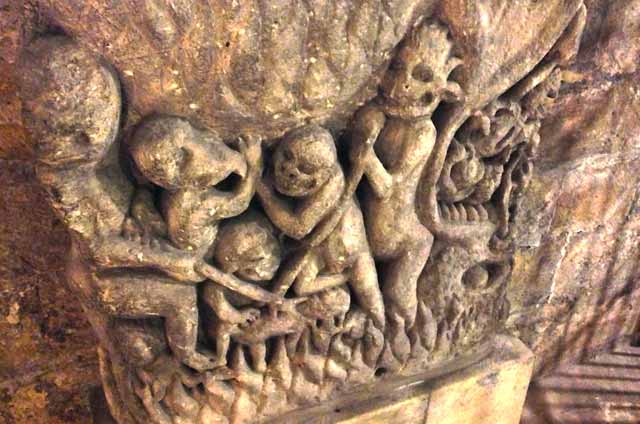The Minster’s undercroft and crypt reveal much about its Norman legacy. The crypt, in particular, contains a number of carved capitals from the period, and a rich array of Norman artefacts. Most fascinating of these is, perhaps, the Doomstone. A survivor from the Norman Minster, it illustrates the Mouth of Hell, showing lost souls being boiled alive by demons. Toads – creatures of magic – decorate the carving.
Within the crypt is also a sculpture of the Virgin and Child. Created in the Romanesque style, it also contains Byzantine influences.
Minster undercroft and crypt Folklore:
The tomb of York’s patron saint, St William, can be seen in the crypt. According to folklore, his early life as a monk became suddenly eventful when he was made Archbishop in the mid 12th century. For reasons unknown, the Cistercian Order, along with the Pope, disapproved, and he was deposed shortly after. A decade later, William was once again elected as Archbishop following an appointment with the new Pope in Rome. On William’s return to York, the townsfolk took to the streets to welcome him. Ouse Bridge collapsed under the weight of people but William prayed for a miracle and, amazingly, none were harmed. When he died only a year later, many miracles were attributed to him.
10

2 comments
John Campbell
Fascinating! Thank you
Dr Alan Whitcomb
I was under the impression that the crypt was ‘re-discovered’ due to some mysterious circumstances. Is this true? Dr Alan Whitcomb